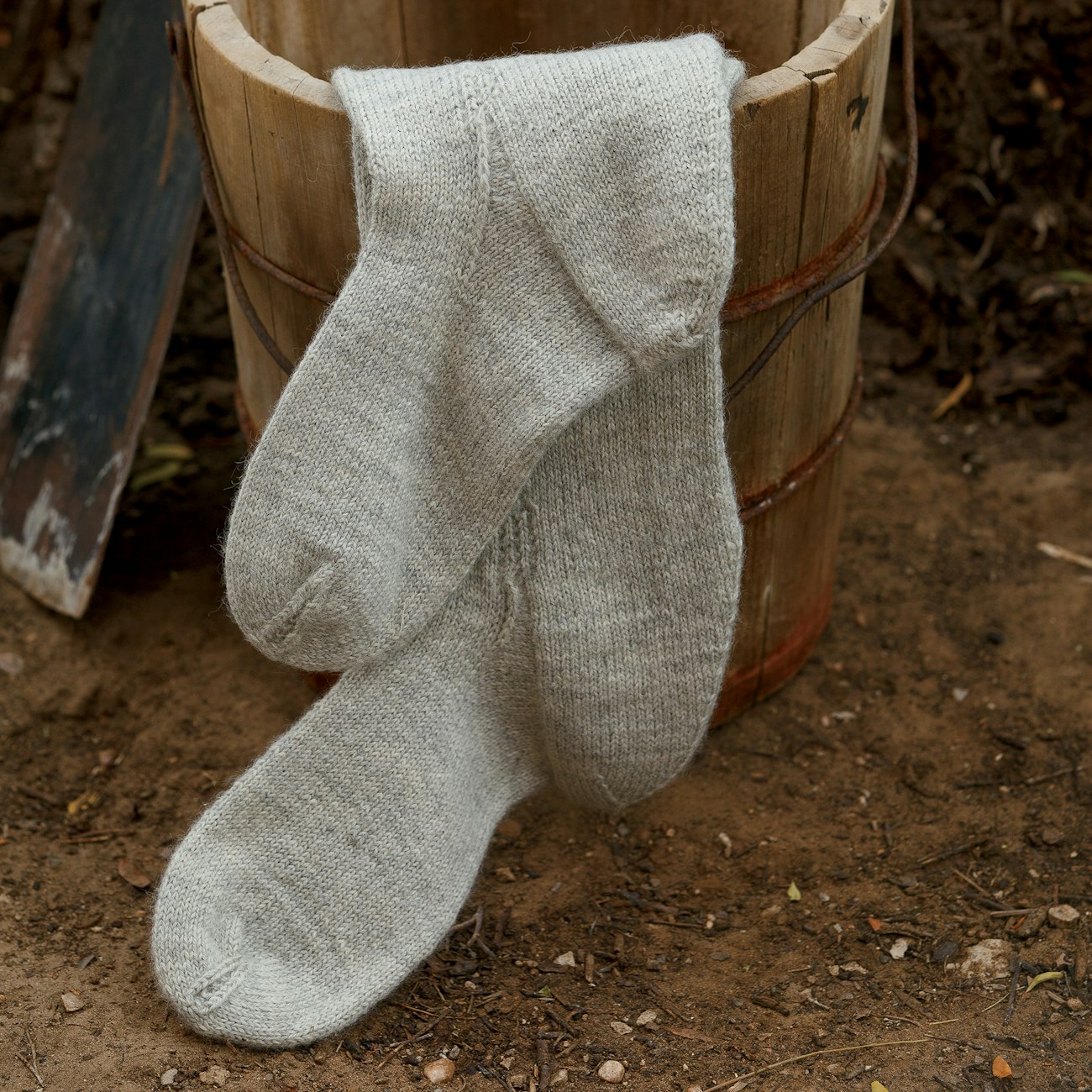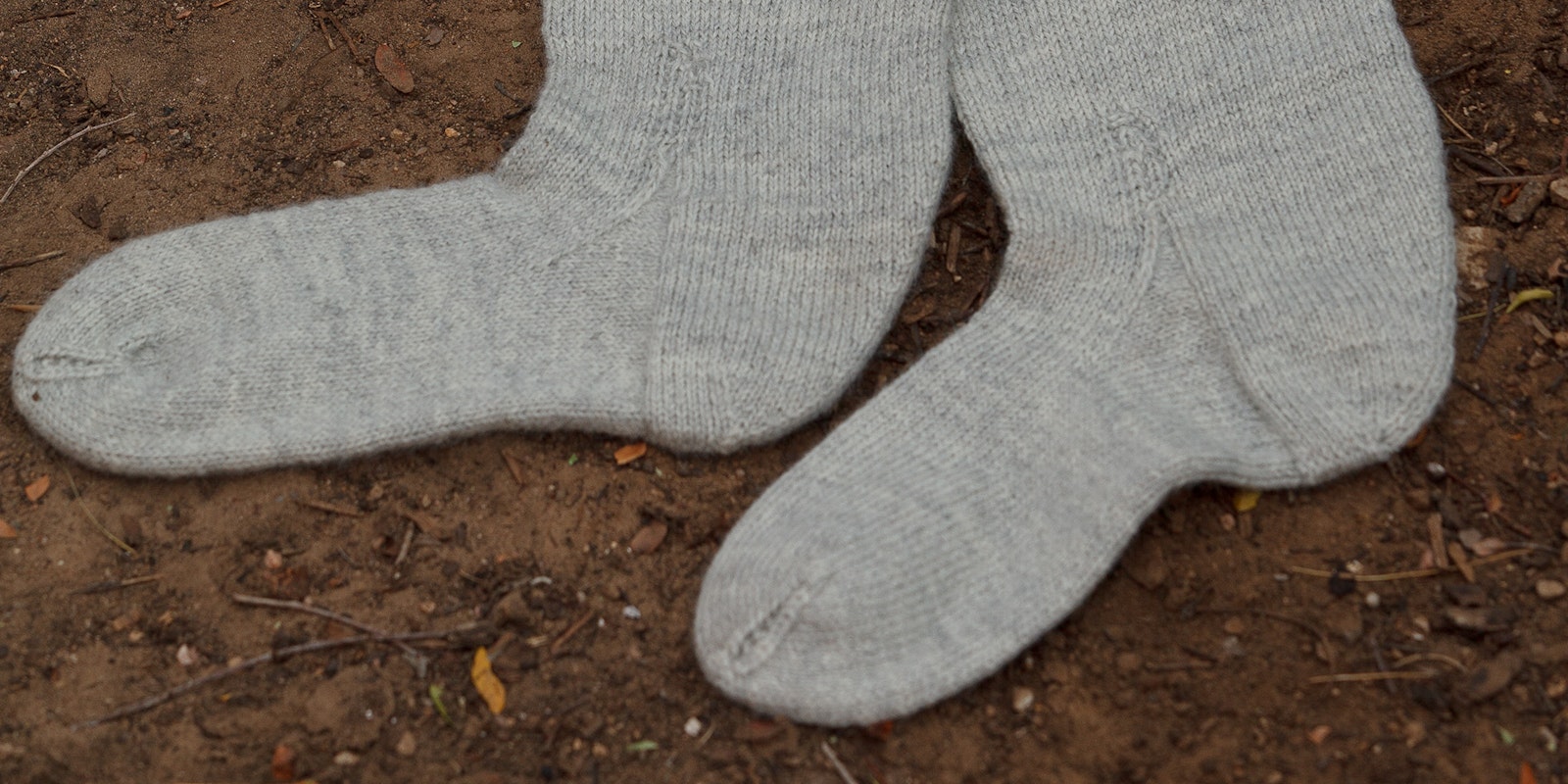These knitted stockings from 1655 are adapted from the stocking instructions published in the compendium of household advice called Natura Exenterata published in London in 1655. The biggest difference between these and the originals is scale: whereas the stockings in the original instructions probably were knitted in fingering-weight wool at a gauge of about 10 stitches per inch (4 stitches per cm), these are knitted in sportweight wool at 7½ stitches per inch (3 stitches per cm). (In 1655, stockings knitted at this gauge would have been regarded as “coarse” or “common” stockings.)
Although two-ply yarn would be more likely in period, the only two-ply sportweight wool that I found was too expensive, so I have used a lovely but sturdy three-ply. Sportweight yarn at this gauge produces a warm but soft fabric. Period stockings were knitted very tightly to produce a dense, stiff fabric that wears much longer. Yarn that is worsted-spun with a tight twist improves the wearing life of stockings, but this is hard to find unless you spin it yourself. This pattern is designed to fit an average-sized woman’s foot (U.S. shoe size 8 or metric size 38) and leg. With some variation in foot and leg length, these stockings are likely to fit most women weighing 100 to 250 pounds (45.4 to 113.4 kg) or men weighing up to 200 pounds (90.7 kg). Try them on as you knit to be sure that they are the right size.

Chris Laning’s reproduction of stockings based on the instructions in Natura Exenterata published in London in 1655.
These do not fit like modern stockings. On most people, they will be loose along the back of the lower leg and ankle and perhaps a little loose across the top of the ankle as well. Stockings like these were intended to be held up by garters. They are knitted to reach a couple of inches (5 cm) above the knee and can be gartered above or below the knee or both. Period garters were strips of woven fabric or ribbon and were not very stretchy; it takes a bit of practice to tie them just tight enough to keep the stockings up, but not so tight as to be uncomfortable. Having garters long enough to wrap around your knee twice, rather than once, before tying makes this easier to achieve.
It is clear from the original instructions that these stockings were intended to be knitted on three double-pointed needles, using a fourth as a working needle. Although 8-inch (20.5-cm) double-pointed needles are available, the far more common 6-inch (15.2-cm) needles are annoyingly short for this project, which calls for as many as thirty-two stitches per needle. If the latter are all you have, the period solution is to use more of them. A modern solution, two circular needles, also works well.
Interested in creating your own pair of stockings? This pattern can be found in the January/February 2013 issue of PieceWork.
Also, remember that if you are an active subscriber to PieceWork magazine, you have unlimited access to previous issues, including January/February 2013. See our help center for the step-by-step process on how to access them.
Chris Laning has been knitting for more than fifty years. She is an independent scholar of medieval knitting and embroidery and is also a historical reenactor known as Dame Christian de Holacombe.
Originally published August 7, 2018; updated February 21, 2024.

